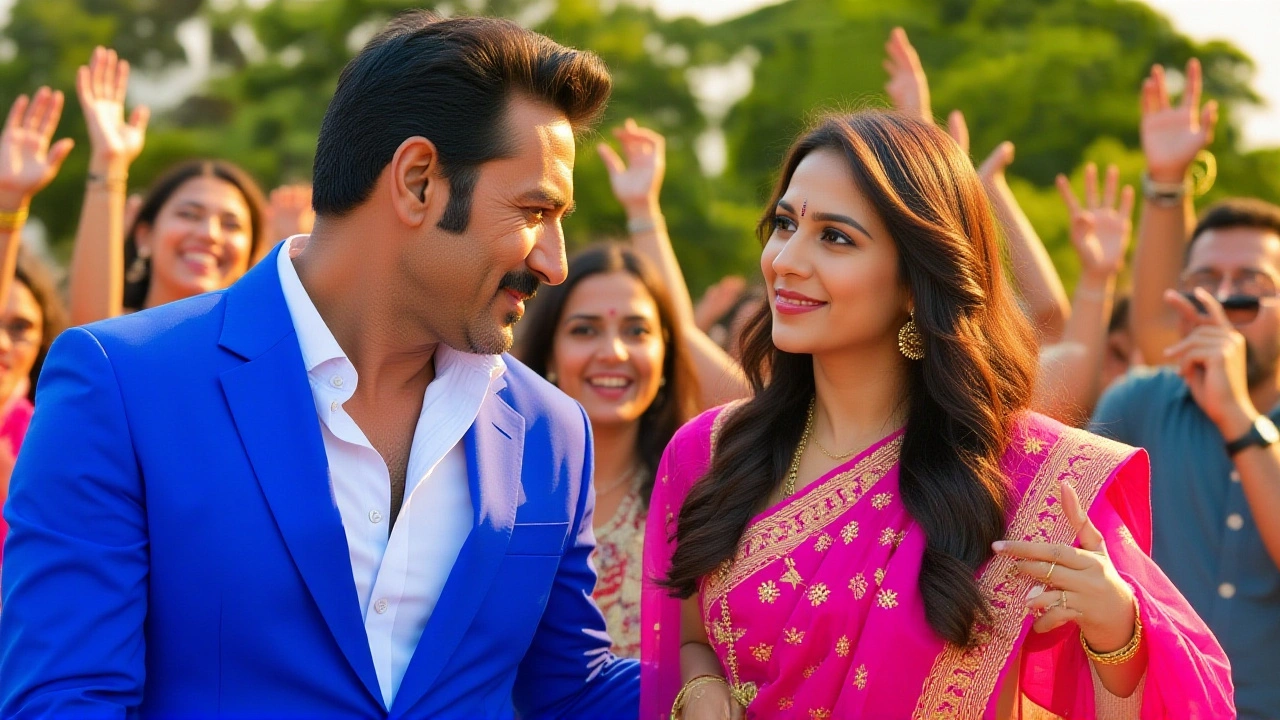Ajay Devgn – A Deep Dive into the Actor’s Career and Impact
When talking about Ajay Devgn, the veteran Indian actor known for his gritty performances, blockbuster action films and nuanced drama roles, it’s hard not to notice how he reshaped modern Bollywood. Also called Ghayal after his breakout hit, Devgn blends raw intensity with flawless comic timing, making him a favorite across generations. Below we’ll unpack why his name still dominates headlines and how his work connects with the broader world of Indian cinema.
How Ajay Devgn Fits Inside Bollywood’s Ecosystem
Bollywood, marked as Bollywood, the Hindi‑language film industry centered in Mumbai that produces over a thousand movies a year, provides the stage for Devgn’s varied roles. The industry’s focus on star power, music‑driven storytelling and massive releases gave Devgn the platform to experiment—from gritty crime dramas like Gangaajal to family comedies such as Golmaal series. Bollywood’s global reach also helped his films cross borders, turning his face into an international brand. This link between star and industry creates a feedback loop: Devgn boosts box‑office numbers, while Bollywood’s marketing machinery amplifies his fame.
One of the most visible ways Devgn proves his range is through action movies, high‑octane films that combine stunts, fight choreography and thrilling narratives. From the relentless intensity of Ghatak to the sleek modernity of Shivaay, his action credentials set a benchmark for realism. The actor’s dedication to physical training—often performing his own stunts—means the “action genre” isn’t just a label; it’s a personal commitment that influences casting choices and box‑office strategies. In turn, the success of his action pictures pushes other filmmakers to raise production values, shaping the genre’s evolution in Indian cinema.
Recognition comes in the form of film awards, prestigious honors like the National Film Awards, Filmfare and IIFA that celebrate artistic and technical excellence. Devgn’s trophy cabinet includes a National Award for Best Actor for Zakhm, a Filmfare Best Actor win for The Legend of Bhagat Singh, and multiple Critics’ Choice accolades. These honors not only validate his craft but also boost a film’s marketability, prompting distributors to push for wider releases. The pattern shows a clear semantic triple: “Ajay Devgn receives film awards, which enhance his market value, which in turn drives Bollywood investment.”
Beyond acting, Devgn founded Ajay Devgn FFilms, a production house that backs content‑driven projects ranging from thrillers to family dramas. The studio’s first major success, U Me Aur Hum, proved that a star‑run banner could experiment without compromising on quality. By producing his own movies, Devgn controls creative direction, budgeting, and casting, allowing him to take risks—like the experimental narrative style in Shivaay. This vertical integration illustrates another semantic link: “Actor launches production house, which creates opportunities for diverse storytelling, which enriches Bollywood’s catalog.”
Collaborations also shape Devgn’s career. Partnerships with directors like Priyadarshan, Rohit Shetty, and Karan Johar have generated distinct cinematic flavors. The Rohit Shetty‑Devgn duo, for example, birthed the high‑energy Golmaal franchise, blending slapstick comedy with crowd‑pleasing set pieces. These recurring collaborations underline a networking effect—frequent teamwork leads to a recognizable brand, boosting audience loyalty and streamlining production pipelines.
From a fan perspective, Devgn’s appeal lies in his authentic on‑screen persona. Whether portraying a conflicted father, a fearless cop, or a witty sidekick, he brings a grounded sincerity that resonates across demographics. This relatability fuels social media buzz, drives word‑of‑mouth promotion, and keeps his movies relevant even as streaming platforms change viewing habits. The actor’s adaptability demonstrates the semantic triple: “Authentic performance builds fan connection, which fuels online buzz, which sustains box‑office success.”
Looking at box‑office metrics, Devgn’s films consistently rank among the top earners of their release years. For instance, Drishyam (2015) crossed INR 200 crore worldwide, while Golmaal Again (2017) breached INR 300 crore. These numbers reflect not just star power but also strategic release windows—typically festive periods like Diwali or Eid—when audience turnout peaks. The timing strategy underscores the relationship: “Strategic release dates boost audience turnout, which maximizes revenue, which reinforces the star’s market position.”
In recent years, Devgn has embraced digital platforms, starring in web series and promoting his movies via OTT channels. This shift shows his willingness to evolve with technology, ensuring relevance as streaming becomes a primary consumption mode. By bridging traditional cinema with new media, he helps Bollywood navigate the digital transformation, reinforcing the genre’s longevity.
All this context sets the stage for the collection of stories below. Whether you’re curious about his early breakthroughs, award‑winning performances, or behind‑the‑scenes production choices, the posts that follow dive deep into each facet of Ajay Devgn’s remarkable journey.

Ajay Devgn’s ‘De De Pyaar De 2’ Set for Nov 14, 2025 Release – Rakul Preet Calls Sequel Bigger
Ajay Devgn's 'De De Pyaar De 2' releases Nov 14, 2025 with Rakul Preet Singh calling it bigger, tackling an age‑gap romance amid family drama.